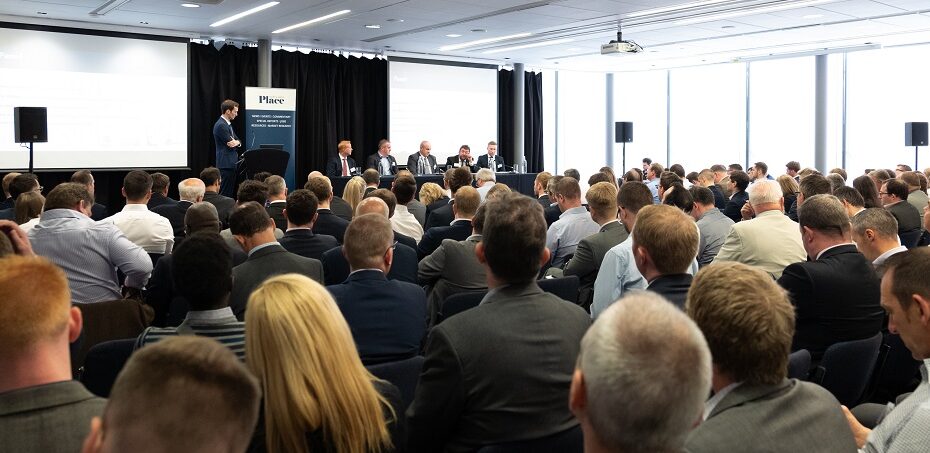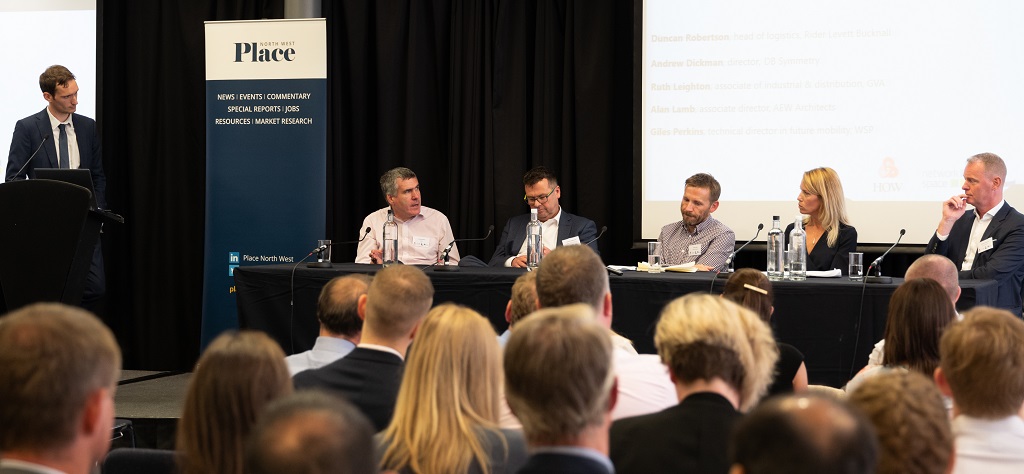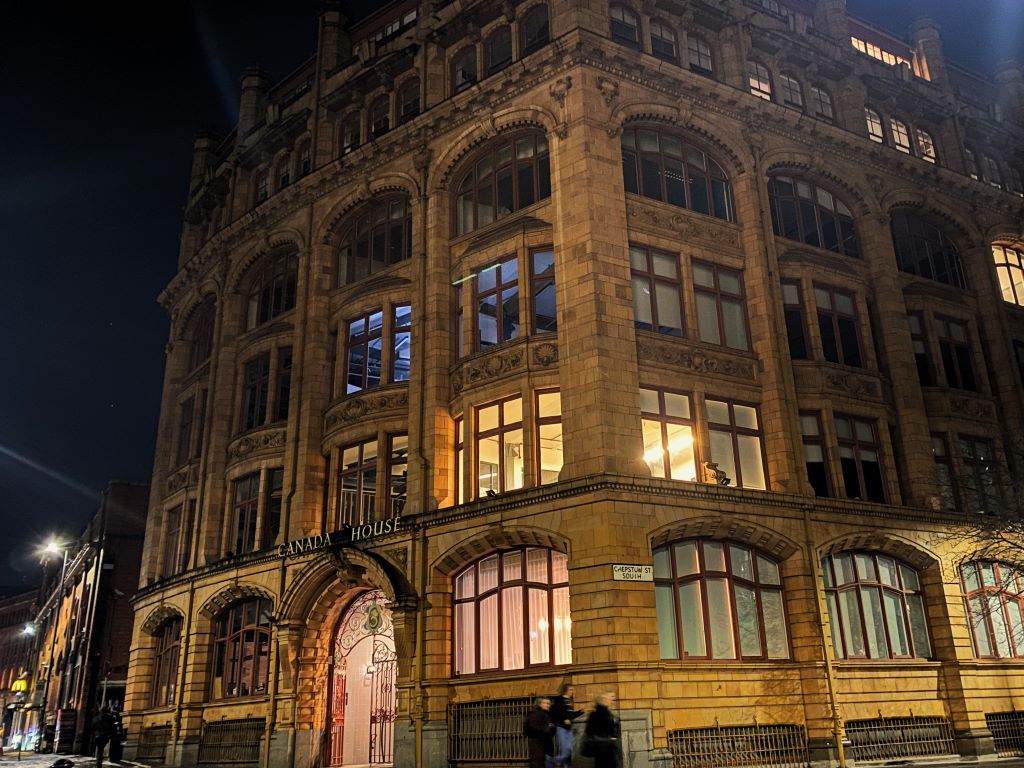Event Summary
North West Logistics, Industrial & Infrastructure | Slides, summary + photos
The region’s industrial and logistics market is set for a buoyant 2018 with new technology and changing customer demand driving major changes in the sector, according to a panel of experts.
Scroll down for link to slides + gallery
More than 180 delegates attended Place North West’s Logistics, Industrial & Infrastructure event, sponsored by HOW Planning, Waterman Group, Network Space and Lexington Communications.

John Sullivan, director of industrial and logistics at Colliers International kicked off the event telling delegates the outlook for 2018 was a positive one, with more buildings coming forward, increased demand and rising rental prices. He told delegates:
- Take up in 2018 was set to surpass the 10.5 m sq ft in 2017. TJ Hughes’ return to Vengrove’s 170,000 sq ft Space 170 warehouse in Liverpool was the biggest deal of 2018 so far, with around 1.5m sq ft of speculative development currently under offer in the region
- There is around 6m sq ft of demand in the North West at present, with Boohoo in the market for 600,000 sq ft of space and Eddie Stobart and B&M both looking for 550,000 sq ft. Around a third of demand in the UK market was now been driven by online retailers
- There has been a 66% drop in availability for existing warehouse sites since 2010, however a number of high street retailers going into administration combined with a number of consolidations from the likes of The Hut Group and increased supply of new sites was improving availability
- Rents were starting to reach pre-recession levels. In the North West average rents for sites over 100, 000 sq ft were £5.75/sq ft but were expected to top £6/sq ft on a more regular basis in 2018 with the biggest rises set to be in Manchester and Warrington

First panel chaired by Charlie Schouten, Place North West, from left – John Sullivan, Colliers International, Dan Gallagher, Stoford, Dale Milburn, Knowlsey Council, Martin Mellor, Network Space and Richard Robinson, FK Group
Sullivan was then joined for a panel discussion by Richard Robinson, design director at FK Group; Dale Milburn, assistant executive director for economic growth at Knowsley Council; Dan Gallagher, joint managing director at Stoford; and Martin Mellor, investment director at Network Space.
- Mellor told delegates work was under way on Network Space’s 103,000 sq ft speculative Element development, made up of three units at Alchemy Business Park in Knowsley. The scheme is the second phase at the 30-acre site and will be available in “around eight months’ time”. Mellor added the depth of demand Network Space has seen at recent schemes in St Helens and Stoke-on-Trent was an encouraging sign
- Milburn provided an update on the 218,000 sq ft Venus 210 at Knowsley Business Park, which is believed to be the largest speculative build scheme in the Liverpool City Region in the last decade. Work started in June with the site likely to be available in late 2018 or early 2019. Milburn added local authorities were increasingly keen to help fund industrial developments as they look to bolster income in the wake of Government funding cuts. “We’re looking to bring forward as many developments as we can, as soon as we can,” he added
- Stoford has now completed £6.5m of infrastructure works at its 1m sq ft Icon Manchester Airport scheme with deals to place Costa Coffee and BP on an amenities plot now agreed and discussions with two occupiers ongoing, according to Gallagher. He added high occupier demand had eliminated the need for speculative development and the planning system needed to speed up to bring larger sites through at a faster pace
- Robinson said the market was busy for contractors but the supply chain was “nervous” following the demise of a number of major suppliers, with shorter payment terms being demanded. He added that skills shortages remained a major challenge for contractors, with FK Group launching its own training academy to bring more young people into the sector
- Sullivan added rising build costs, and in particular land values, were a key factor in driving up rental prices
Following a networking break, Giles Perkins, technical director in future mobility at WSP, then gave a fascinating insight into how new technology could bring major changes to the industrial and logistics sector. He told delegates:
- Automation and artificial intelligence is set to completely reinvent transportation, with the disruption predicted to be “as big as the switch from the horse and cart to the motor vehicle”
- There is a huge amount of venture capital money being pumped into technology for freight, vans, cars and other forms of transport, but little thought had been put into the impact on buildings, highways and infrastructure; how we will use, design and retrofit schemes; and the impact on the square foot values of developments in the long term
- It was important developers began to future-proof their assets for changing technology and occupier demand and ensure sites were fit to deal with the changing make-up of the logistics industry, with new forms of air and ground vehicles likely to be used for last mile delivery
- Grid connection and access to enough power to cope with electrification of vehicles will be a key viability challenge for developers in the future

Ruth Leighton, associate of industrial and distribution GVA,
Perkins was joined by Duncan Robertson, head of logistics at Rider Levett Bucknall; Andrew Dickman, director at DB Symmetry; Ruth Leighton, associate of industrial and distribution at GVA; and Alan Lamb, associate director at AEW Architects for a final panel discussion covering futures trends in the industry.
- GVA’s Leighton said the region needed to think differently about the kind of buildings needed to serve last mile delivery, suggesting the conversion of vacated retail units and car parks near city centres for industrial use. She added the arrival of multi-storey warehouses, such as those built in London and Paris, in the North West were still a long way away as the schemes were complex to operate and expensive to build
- AEW Architects’ Lamb agreed new types of buildings were needed to improve last mile delivery in Manchester and predicted a new generation of hybrid buildings were on the way that served multiple uses. However, he warned planning departments would struggle to keep pace with the change in approach and the demand for taller warehouses – especially on speculative builds
- Dickman said the historic mantra of “location, location, location,” was being replaced by “location, power, employees” as the key demands for occupiers. He said DB Symmetry was working with occupiers to make buildings as flexible as possible so they could be adapted as technology advanced. He added the development of more agile vehicles could move for longer lengths of time could reverse the industry trend and mean yards on sites could get smaller rather than bigger
- Robertson said there was the potential to use BIM more on industrial building design, but it needed to be driven by occupiers. He added end users were struggling to grasp the benefits of the technology
- Perkins warned technology was moving faster than legislation could cope with and it was up to the market to innovate and make technology work to a deliver the visions set out in masterplans. He added that while it was important for developers to focus on “the day job” and achieve their values on current schemes, they must keep sight of future trends and start to adapt projects for technology now
View Giles Perkins’ presentation on SlideShare here
Click any image below to launch gallery
- John Sullivan, director, industrial & logistics, Colliers International
- John Sullivan, director, industrial & logistics, Colliers International
- First panel chaired by Charlie Schouten, Place North West, from left - John Sullivan, Colliers International, Dan Gallagher, Stoford, Dale Milburn, Knowlsey Council, Martin Mellor, Network Space and Richard Robinson, FK Group
- Final Panel, from left - Charlie Schouten,Place North West, Giles Perkins, WSP, Duncan Robertson, Rider Levett Bucknall, Alan Lamb, AEW Architects, Ruth Leighton, GVA, Andrew Dickman, DB Symmetry
- Final Panel, from left - Charlie Schouten,Place North West, Giles Perkins, WSP, Duncan Robertson, Rider Levett Bucknall, Alan Lamb, AEW Architects, Ruth Leighton, GVA, Andrew Dickman, DB Symmetry
- Charlie Schouten, senior reporter, Place North West chairing the first panel
- Dan Gallagher, joint managing director, Stoford
- Dale Milburn, assistant executive director for economic growth, Knowlsey Council,
- Richard Robinson, design director, FK Group
- Martin Mellor, investment director, Network Space
- Martin Mellor, investment director, Network Space and Richard Robinson, design director, FK Group
- From left - Dale Milburn, Knowlsey Council, Martin Mellor, Network Space and Richard Robinson, FK Group
- Giles Perkins, technical director in future mobility, WSP
- Giles Perkins, technical director in future mobility, WSP
- Ruth Leighton, associate of industrial and distribution GVA,
- Question from the floor to the final panel.
- Charlie Schouten, senior reporter, Place North West
- Duncan Robertson, head of logistics, Rider Levett Bucknall,
- Alan Lamb, associate director, AEW Architects
- Andrew Dickman, director, DB Symmetry
- Giles Perkins, technical director in future mobility, WSP




























